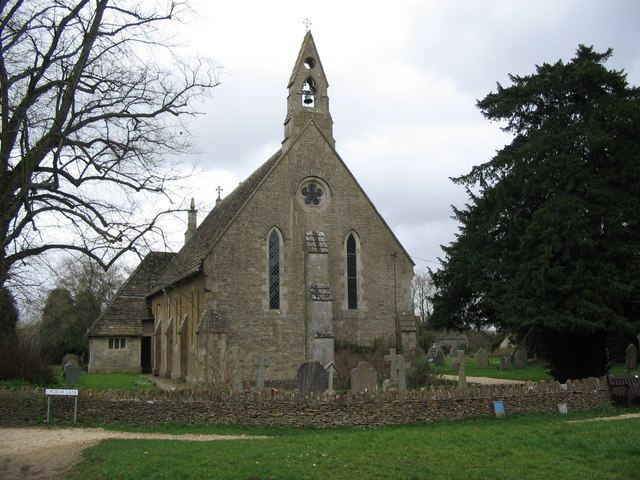Population 841 (in 2011) Unitary authority Local time Tuesday 1:16 PM | OS grid reference ST926770 Sovereign state United Kingdom Dialling code 01249 | |
 | ||
Weather 14°C, Wind W at 24 km/h, 76% Humidity | ||
Kington Langley is a village and civil parish about 2 miles (3.2 km) north of Chippenham in Wiltshire, England. The parish includes the hamlet of Bowldown.
Contents
- Map of Kington Langley Chippenham UK
- Geography
- Governance
- History
- Parish church
- Union Chapel
- Amenities
- Notable people
- References
Map of Kington Langley, Chippenham, UK
Geography
The parish covers about 1,571 acres (636 ha). The geology is mostly of the Jurassic and Cretaceous periods. It is on a high water table and the soil is composed of sand with a sub-soil of Oxford Clay. The village stands on a hill, rising to 100 metres (330 ft) towards its western end. It is an example of a 'squared' village with approaches from Chippenham, Swindon and Malmesbury. It has three greens; the largest is the Common, which covers 30 acres (12 ha) and is the focal point of the village.
The village is 1.5 miles (2.4 km) long and is separated from Kington St. Michael (to the west) by the A350 road which links Chippenham with the M4 motorway and Malmesbury.
Governance
The village is part of the 'Kington' electoral ward. The ward starts in the south west in the parish of Chippenham Without, proceeds north east through the Kington's to end at Christian Malford. The total population of the ward at the 2011 census was 5,014.
History
Kington Langley was part of the parish of Kington St. Michael until 1865. It was called Kington Langley to distinguish it from another village, Langley Burrell. The original hamlet was known as Langley Fitzurze in medieval times although other spellings such as Langeleghe (11th century), "Langley Fearne" (c.1513), "Langley Fernhill" (1660) have been used.
The Greathouse, beside the B4069 road, was built in about 1700. It is a country house of nine bays and two storeys.
Parish church
Parishioners used to have to travel more than 1 mile (1.6 km) from Kington Langley to worship at Kington St. Michael. In the 1670s a chapel of ease was created by converting a cottage at Kington Langley. In 1856 a purpose-built chapel of ease was completed, which was made the Church of England parish church of Saint Peter in 1865. St. Peter's was designed by C.H. Gabriel with lancet windows in an Early English Gothic style. St. Peter's is in the Diocese of Bristol.
Union Chapel
The earliest known record of Protestant Dissenters meeting for worship in Kington Langley is dated 1742. They met in private houses until 1834, when the house registered for their meetings was that of James Pinnegar, a builder. Pinnegar built Union Chapel on the Common, completing it in 1835. The name refers to its foundation as a union of Dissenters of the Baptist, Moravian and Independent traditions.
The chapel choir met in the middle of the nineteenth century at a chapel-goer's house on Sundays. The chapel also had a band that used instruments such as flutes and violas.
Union Chapel remains independent, and as of 2015 is active under the title of Union Chapel Christian Fellowship.
Amenities
Kington Langley has two public houses: the Hit or Miss Inn and the Plough Inn. The parish has a Church of England primary school (which bears the village's old name of Langley Fitzurse), a village hall, playing field, a tennis court and a park.
Notable people
Wiltshire Village, a 1939 book published by Collins with text by Heather Tanner and illustrations by her husband Robin, is a thinly disguised description of local village life.
